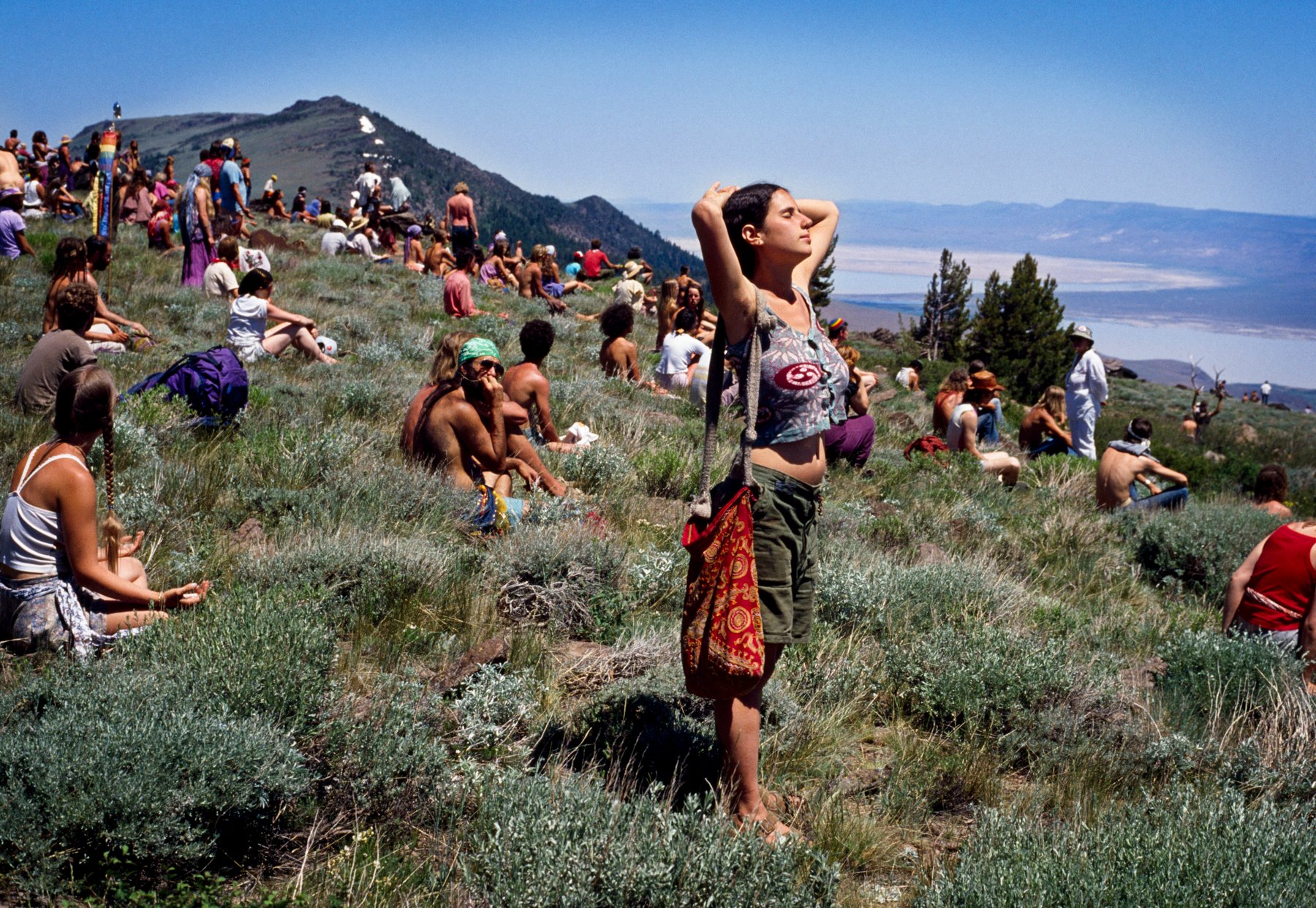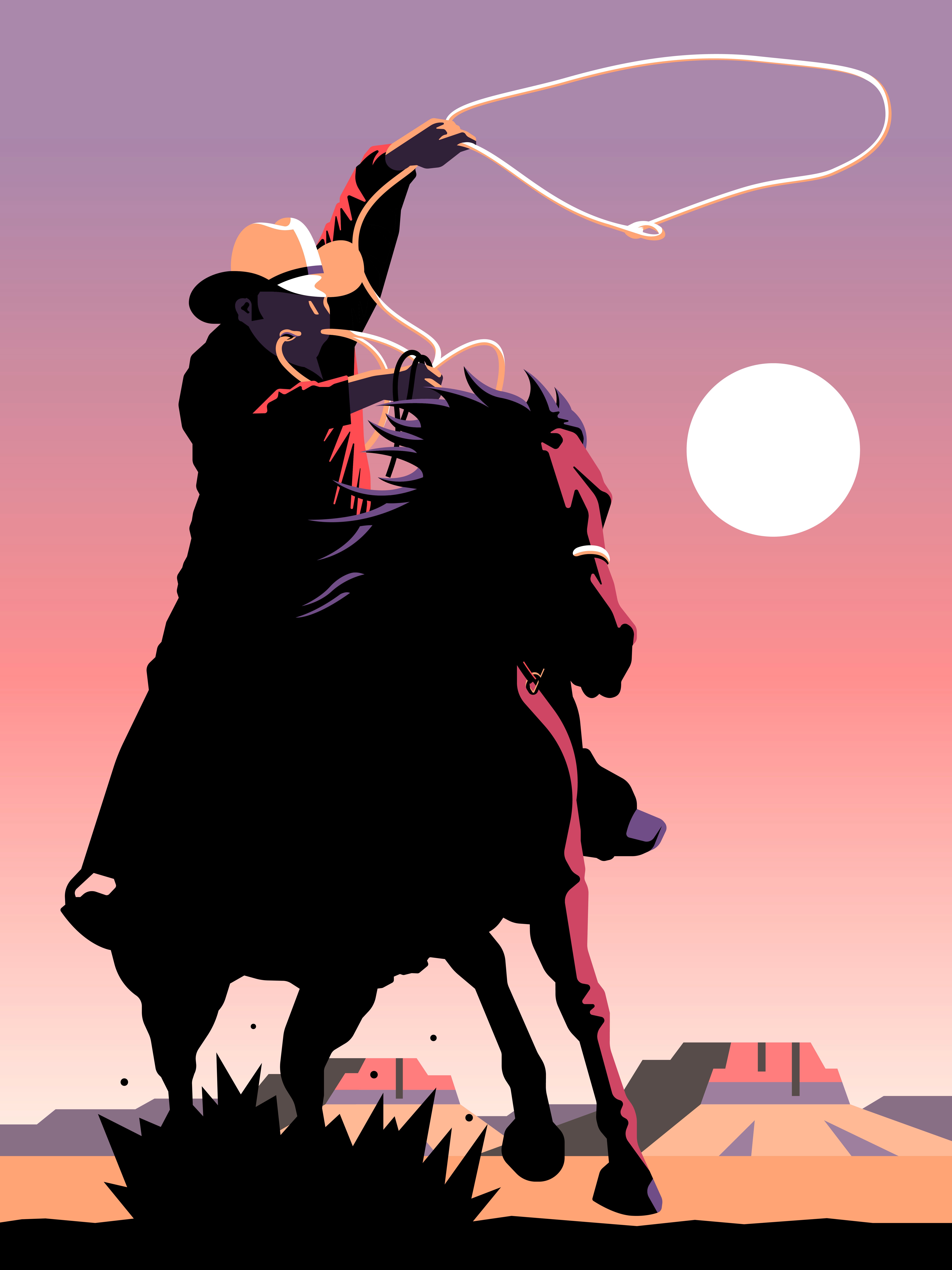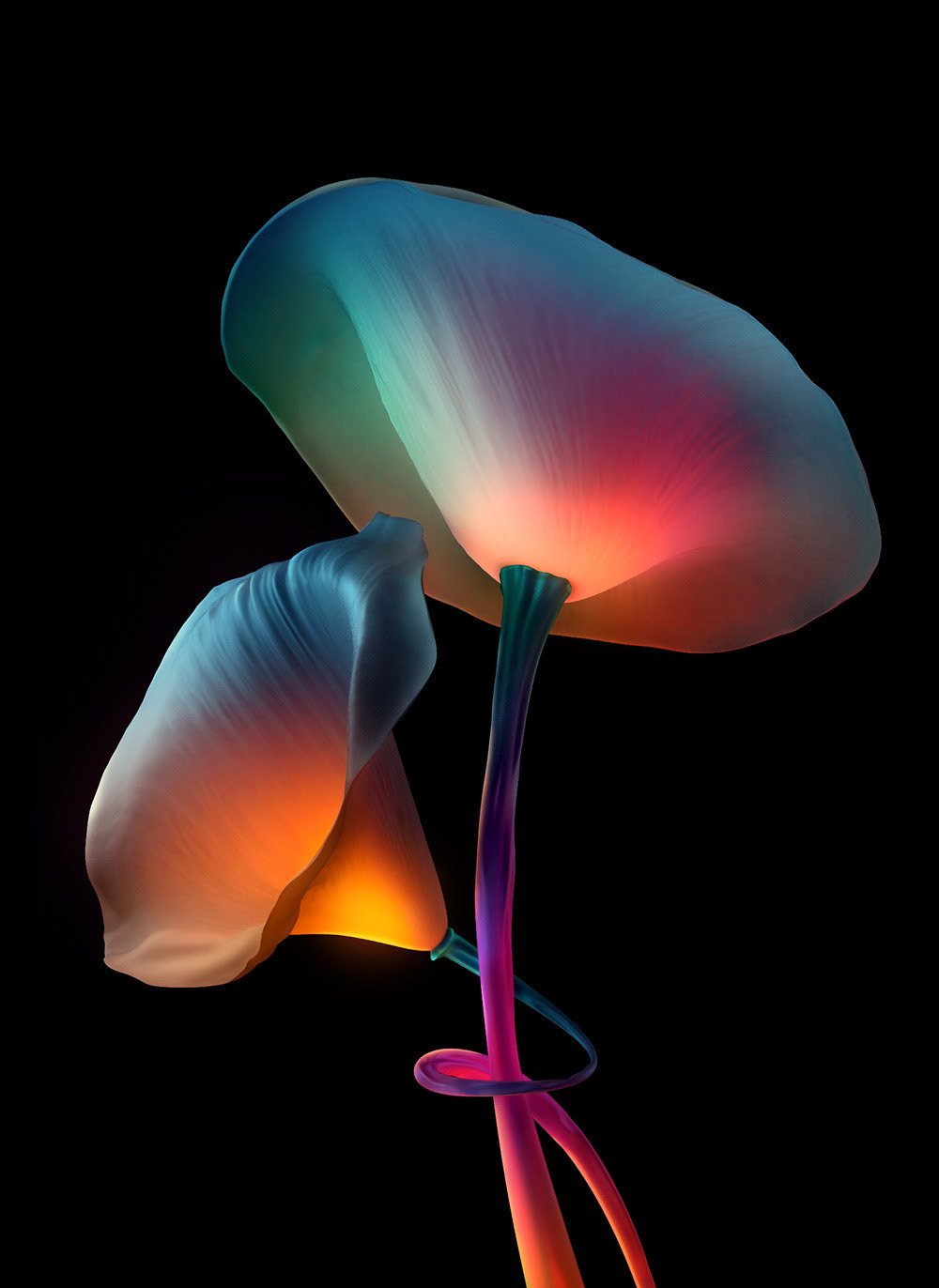 "710 ASHBURY" by Jay Blakesberg, 1980; minted 2023.
"710 ASHBURY" by Jay Blakesberg, 1980; minted 2023.
Meet Jay Blakesberg, the legendary San Francisco-based photographer and filmmaker, whose passion for rock music has driven his illustrious career. From his humble beginnings attending Grateful Dead shows with a borrowed camera to becoming the band's official photographer, he has documented the rise of alternative rock and collaborated with music greats like Santana, Tom Waits, and Bjork. Blakesberg's journey has been nothing short of remarkable. His iconic photographs have graced the pages of Rolling Stone and other prestigious publications, cementing his position as one of the most sought-after rock photographers of our time. He’s published numerous art books, and now spearheads a massive photographic archive, RetroBlakesberg, with his daughter Ricki. Now, he ventures into the world of cryptoart with his genesis SuperRare drop, a series of photographs offering collectors a captivating tour through his nearly 50-year long career. Today, Jay shares insights into his creative process, his remarkable career, and his bold forays into the digital Wild West in an exclusive conversation with SuperRare writer and art agent, Arianne Lapidus.
Answers have been edited for clarity and brevity.
Arianne Lapidus: Jay, your journey as a photographer started with concerts as a teenager. How has that initial experience of capturing music shaped your approach to photography over the years?
Jay Blakesberg: Shooting live concerts was like easy low-hanging fruit, right? You didn't really need any kind of special permission. Certainly when I first started shooting, and it could have been the biggest band in the world or you know, the garage band playing at your high school dance… I mean, it was my training ground. I think that I had innate ability in terms of composition, right? But when we shot film, you had to remember what exposures you were using, how you developed it, and see if it worked after the fact. And if it didn't work, you asked, “What could I do differently next time to make it work?” So you know, it was a training ground. It was trial and error.
When I was trying to become a professional photographer, that process kind of started all over again. Like, how do you shoot live music? How do you get good pictures consistently? How do you develop them, so that your rolls of film are really good and worthwhile? Those are all things that you sort of need to figure out and understand when you're teaching yourself photography.
AL: With such an extensive body of work covering iconic musicians and events, how did you decide which images to feature in your first NFT collection? Were there any particular moments or artists that hold a special place in your heart?
JB: A lot of thought went into what we wanted to present as NFTs. It's such new territory for me. I've sold a lot of prints in my time. I've done gallery exhibitions at museums. But, NFTs and cryptoart is still the Wild Wild West.
 "RAINBOW GATHERING" by Jay Blakesberg, 1984; minted 2023.
"RAINBOW GATHERING" by Jay Blakesberg, 1984; minted 2023.
But I wanted to choose things that resonated with who I am. Things that resonate with what me and Ricki [Blakesberg] built as a brand in “Retro Blakesberg,” but also things that were interesting, hopefully to other people that experienced the things I captured. So, within the collection, there's a series of photographs of my friends from high school…a lot of people my age could relate to those photos, right? Because they did the same thing. They sat in their rooms like me, they did bong hits, were out in the woods drinking beer, or went to the same concerts when they were teenagers.
We tried to pick things that people would resonate with, either in terms of the experiences they had.
But also, I want people who buy my artwork, whether it's a print or an NFT, to have a connection to that piece of art, and not just treat it as an investment to sell later. I want them to enjoy that NFT in its digital format, or whatever. I want them to be able to have that experience with the work and realize that it is also a unique piece of art that only they have.
AL: As a renowned photographer whose work has been featured in various magazines, how did the shift from traditional print media to the digital realm affect your approach to photography? Has your process or photographic style changed as a result of this transition? Specifically, have you encountered challenges in recapturing the unique essence that came from the variables involved in developing film photos, and how have you ensured that your digital work still reflects your distinctive style?
JB: The two are very different things in terms of creative output, approach, and creativity. When I shot on film, I did it in a way that suited my creative tastes. So, I have my blue period photos, or shooting black and white instead of color, or vice versa. It could have been shooting a Polaroid and just delivering that to a client and saying here's your final photograph.
And so, you know when we shot film it was very defined by the tools that we had. film cameras, different lenses, different film formats, 35 mm, medium format, 4x5, large format, toy cameras, plastic cameras, panoramic cameras, etc. We had all these tools. And then we all switched to digital cameras, and suddenly we basically all had the same camera. The same lenses, formats, sensors, and software. So we became homogenized and had to, you know, mid-career, reinvent ourselves in a digital way.
For me, I started shooting digital pictures in maybe 2004-ish. I remember I bought a digital camera off an ad in the newspaper for $200. It was literally a black-and-white, l goggles or binoculars-looking thing that was made, I think, by Apple. I can't remember.
I didn't know the difference between print resolution and web resolution. We didn't know what 300 DPI meant. We didn't know what 72 DPI meant. We didn't know the relationship between inches and pixels per inch. You know, we just took photographs that somehow ended up on the printed page.
Right, and so we learned the curve and went with the curve, and I figured out ways to define myself as an artist using the digital tools available. It took a minute to get there.
We came up with a look that was very distinctly mine. I got the idea from a portrait of David Byrne and Thom Yorke from Radiohead I saw in a European magazine. It was super high contrast and super over-sharpened. Every pore and hair on their faces was bursting out because it was so over-sharpened and so over-processed. And I was like, well, that's cool. Because it didn’t look like a bland digital photo that everybody was getting out of their cameras. I had hired a young kid here in my studio named Ben, who was 19 years old and straight out of art college, and asked him, “How do we do this? How do we recreate or get to this kind of look?”
It took us six months of playing in early Photoshop to come up with this thing. That became this look and then it was me. It was this very, very distinct look. But then what happened over the next five years is Lightroom started adding those exact same things to their basic interface. So instead of having to spend six months in Photoshop, it was immediate.
All of a sudden, I had all these different artists and musicians coming to me like, “That photographer is stealing your look, that photographer is copying you!” Technology is the great disrupter. So that's really the very, very, very, very long answer to transitioning from film to digital and trying to find something original about what I was doing.
 "NOBODY FOR PRESIDENT" by Jay Blakesberg, 1980; minted 2023.
"NOBODY FOR PRESIDENT" by Jay Blakesberg, 1980; minted 2023.
AL: Yeah, it must be hard to stay ahead of that curve. I know that, like, rapidity of the pace of change with technology. I mean, I'm only 27, but I'm just old enough that my first camera was a film camera. I was raised on film. My uncle was a photographer. He handed my first camera down to me, and I actually still shoot on film because I prefer it. But it's interesting because I didn't really think about the transition of the tech surrounding editing because that has never been my forte or what I've gravitated towards. It's really interesting to hear about your process of finding that unique style again, from first in the chemical processes of developing an image to an After Effects sort of situation.
So, Next Question. You've been closely associated with the Grateful Dead community and its fans, Deadheads. How do you think the NFT space might resonate with this passionate and devoted fanbase?
JB: You know, it just I think it depends on the individual, because a lot of the Deadheads are older and they're not technologically savvy because they'd never have had to be. I was forced to be because of my career and my profession. But there are a lot of people that are my age that are luddites and can barely use their iPhones.
AL: But Deadheads comprises a much younger community as well. I think that this band in a lot of ways transcends generations.
JB: Absolutely. There are a lot of young people that are following this band. Kids of the original fans or fans themselves. I mean, Brian–is that his name? He works at SuperRare.
AL: Yeah, Brian. A few of the team are huge Deadheads.
JB: There you go. A younger generation of fans who are much more crypto-aware.
AL: On that point, the Grateful Dead community is known for being very devoted, not only to the band and the music but also to the lifestyle itself. I'm curious whether you think that kind of zeal applies to people who might seek out your NFTs.
JB: I think that people are devoted to that Grateful Dead experience, and if they are NFT type of people they would probably resonate with what we're offering. I did a book a number of years ago called Hippie Chick: A Tale of Love, Devotion, and Surrender. The idea was: You love the band, you love the scene. You love the music, you love the songs. You love the merchandise. You’re devoted; you buy the tickets, you go to the concerts, you travel long distances to see them over and over again. You surrender to them, right? So it's the same thing, you know. Does this become part of their experience? Is the NFT thing cool enough for them that they're willing to drop the money on it? You know, take the ride, buy the ticket, take the ride, you know? We'll find out.
AL: So this is your first drop with SuperRare, but going forward, do you see any opportunities to incorporate video elements into your NFTs to create immersive experiences for collectors?
JB: Maybe, maybe not. I'm not really sure. Last summer, I made a couple of really cool, kind of slow-motion videos of Deadheads dancing. I could actually see some of those as NFTs… it could actually be kind of fun. We’ll see how this goes. Wild West, and all that.
 "ROCKY MOUNTAINS" by Jay Blakesberg, 1980; minted 2023.
"ROCKY MOUNTAINS" by Jay Blakesberg, 1980; minted 2023.
AL: Your photography has captured the essence of various music genres, from alternative rock to jam bands. How do you envision the NFT platform broadening the reach of your work to new and diverse audiences worldwide?
JB: I'm hoping to reach more than just Deadheads. I'm hoping that it's people that are interested in the music of all genres. I shot alt-rock, I’ve shot the Flaming Lips, Jane's Addiction, the Chili Peppers, Nine Inch Nails, PJ Harvey, and Sinead O'Connor…the list goes on and on. So we'll see how this one works. If it resonates, then maybe we'll do an alt-rock drop next. We’ll see how it connects. I want to reach all types.
AL: The NFT space allows for unique ownership of digital assets. What is the potential for fans and collectors to own digital representations of your photographs? Do you think this provides them with a direct connection to your art?
JB: Well, that's what we hope for. It's a brave new world, and we don't know where it's going. You know, we've always been very protective of our rights. And then the internet came along, and we started posting our photos online…The genie was out of the bottle then and we couldn't get it back. I’ve seen a lot of elderly photographers or people who didn't understand how it worked. They were like, wait a minute, wait a minute, why are my pictures on your website and I'm not getting paid money for it? Like, that's not how it worked in this world for 100 years.
In the golden age of magazines when people were covering events of some of the most groundbreaking pop culture, political, and historical sporting events of our time... Those photographers owned that stuff. And they were used to saying, “Okay, I took it on film, I own the negative.” Here's a print, you know, I send it to the newspaper or the magazine. Maybe I made a print that’s hung up in a gallery, and now somebody bought it and they're enjoying it on their wall.
NFTs–this is just a new way to consume that art. I'm hoping that people will look at it the same way. Everybody consumes art in a different way. And so I think that we just all need to recognize this might be a new way to consume art and connect with it, and make sure the artist gets paid in the process.
AL: Absolutely. Okay, last question. As you prepare to drop your first collection of NFTs, what message or experience do you hope to convey to those who will be collecting and engaging with your digital art?
JB: I mean, I just hope that it reaches a new audience. And I hope people can appreciate the NFTs and enjoy them, not only as some sort of investment. To have whoever collects them walk away and say, “I love that photograph. It means something to me. I'm gonna display it in my digital display panel, and I'm going to enjoy it.” That would be cool. Of course, I want it to generate revenue for me. But, I have no idea what's going to happen. I’m open to anything. It's the Wild Wild West, so I’ll just see what happens.
Catch Jay’s Genesis drop on SuperRare, available August 10th here.



